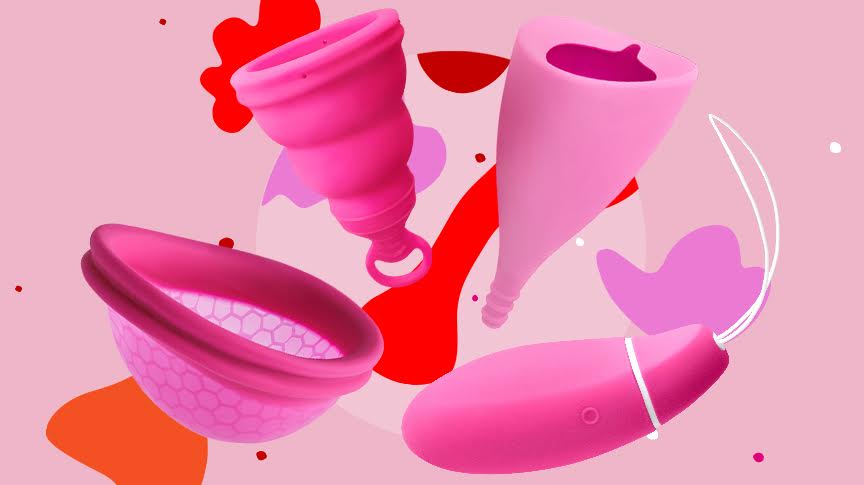Pelvic Organ Prolapse and Menstrual Cups, Everything You Need to Know

A recent rumor suggests that menstrual cups cause vaginal prolapse or the condition in which the pelvic floor muscles weaken and internal organs protrude into the vaginal space. But the reality is just that there is no evidence that it can not cause prolapse, but it is not likely to do that.
A statement by Put A Cup In It (PACII):
Prolapse is not uncommon and the use of menstrual cups is on the rise meaning more prolapse sufferers will be cup users. This does not equal a correlation… Until there is actual evidence that supports the ‘guesses’ put forward in this article regarding cups leading to prolapse our stance is that light bearing down is no more likely to cause a prolapse than your daily bowel movement.
That being said, let’s break down the science behind what causes pelvic organ prolapse and how (surprisingly) common it is among women.
Who gets pelvic organ prolapse?
According to the Office on Women’s Health, pelvic floor disorders affect 1 in 5 women in the U.S., or roughly 20%. While pelvic floor disorders cover a wide range of conditions such as a lack of bladder and bowel control, pelvic organ prolapse itself affects 3% of women.
What are the symptoms of pelvic organ prolapse?
Symptoms depend on which organ is being affected (bladder, urethra, uterine, small bowel, rectum), but here are the most common:
- A feeling of pressure or discomfort on the pelvic area
- Urinary leaks or chronic urination
- A lower backache
- Painful intercourse
- Vaginal spotting or bleeding
What causes pelvic organ prolapse?
Pelvic organ prolapse can be caused by a variety of things, according to healthcare professionals. Here is some of them.
- Pregnancy and vaginal childbirth
- Constipation
- Hysterectomies
- Obesity
- Smoking (that leads to chronic coughing)
- Menopause and aging
Gynecologist Alyssa Dweck, MS MD FACOG says:
Pelvic floor muscle weakness is quite common and typically due to genetic factors, pregnancy and being above ideal body weight. Menstrual cup use is unlikely to contribute to risks already present.
How do you treat pelvic organ prolapse?
Since the most common form of pelvic organ prolapse is cystocele, and typically caused from childbirth, one of the best treatments is through kegel exercises. These exercises are designed to strengthen or restrengthen, pelvic floor muscles. If your prolapse is affecting your bowel, clean eating and a fiber-rich diet can help remove any straining movement.
But you must keep in mind Kegels are not the only pelvic floor exercise, and more importantly, there are other exercises that can help you even more. That is often shocking to hear since Kegels but in reality, Kegels are often over-prescribed.
Furthermore, people are usually told to do Kegels without undergoing an examination to determine if they can actually perform a Kegel correctly. This is important because some people are not able to do a Kegel correctly with verbal instruction alone. A pelvic floor examination is also important to determine what the pelvic floor muscles feel like. If a person has guarded, tense, or hypertonic pelvic floor muscles, then doing Kegels would not be an appropriate exercise. This is why seeing a specialist and undergoing a pelvic floor examination prior to doing Kegel exercises is important. It can help determine the appropriate treatment and exercise program.
A pessary, or medical device that is worn internally to help keep the organs in place, is also a common treatment. The most extreme cases call for a hysterectomy or surgical removal of the affected organ.
How can you prevent pelvic organ prolapse?
Again, kegel exercises may be a good way to prevent any type of pelvic organ prolapse, however, it is important to note that they can be caused by factors outside of your control, such as aging or family history. Things you can control are maintaining healthy eating habits and opting out of smoking, since both of these things can cause pressure on pelvic organs.
Dr. Shreelata makes the following recommendation:
The first thing to consider is the type of menstrual cup you’re using – vaginal cups sit lower in the vagina whilst cervical cups sit further up, covering the cervix. I would recommend that you are comfortable and undisturbed in a quiet location when removing your menstrual cup, to relax your pelvic floor muscles. Make sure you have washed your hands and dry them completely to get a good grip of the stem. Squatting or resting a foot on the edge of the bath can make it easier to feel the stem of the cup. Pinch the cup to release the seal and then gently pull it down and out. If this doesn’t work, you can try to hook your finger around the cup to drag it down with care. In some cases, you may need to consult a doctor to help remove menstrual cups (more commonly cervical cups as they sit higher up in the vagina), but this is not common. There is currently little evidence to suggest that using your pelvic floor muscles to bring the cup lower in the vagina can alone cause pelvic floor prolapse.
Whilst some women can find it difficult to insert or remove the menstrual cup, there are no clear reports of prolapse associated with using a menstrual cup alone. The largest review of menstrual cups, published in The Lancet in 2019 found that urinary tract complaints may occur when using the menstrual cup, but there is no record of prolapse. Prolapse is a chronic condition that develops over time rather than triggered by short-term use of menstrual cups or other menstrual products.
Risk factors for prolapse include being overweight, pregnancy and childbirth, chronic cough, or constipation. If you have been diagnosed with a vaginal wall or uterine prolapse, it’s worth consulting your Gynaecologist to find the right menstrual cup for you.
We are stoked to live in a time with tons of options, and even more stoked to hear that menstrual cups provide so many women with happy and healthy periods.
- Lancet Public Health. 2019 Aug; 4(8): e376–e393.
- Published online 2019 Jul 16. doi: 10.1016/S2468-2667(
19)30111-2 - PMID: 31324419 Menstrual cup use, leakage, acceptability, safety, and availability: a systematic review and meta-analysis
- Anna Maria van Eijk, PhD,a Garazi Zulaika, MPH,a Madeline Lenchner, MSc,c Linda Mason, PhD,a Muthusamy Sivakami, Prof, PhD,d Elizabeth Nyothach, MSc,e Holger Unger, PhD,b,f Kayla Laserson, ScD,g and Penelope A Phillips-Howard, Prof, PhDa,*
- https://clinicaltrials.gov/
ct2/show/NCT02924740

A collective group of “lady experts” at Intimina who love sharing our personal experiences, even when they are a little too personal. We believe it’s time to start breaking down the taboos around menstruation, motherhood, and menopause, and start owning our female health.



I wholeheartedly think you should review this article. Menstural cups can cause suction which when not released properly can cause prolapse. Secondly kegels for prolapse sometimes is terrible depending on what the issue is with the woman. Sometimes kegels can actually be making your pelvic floor worse! Please contact a Pelvic Floor Physical Therapist and learn a lot more.
Hi Rachel,
thank you for your comment. Yes, we agree, it is always the best decision to talk to a doctor before making anything to your body or your health if you are not entirely sure about it. We definitely recommend that to all our readers, especially in this case.
Best regards,
So I normally use the I stead soft cups (disc.) As of this past Friday I was dx with prolapse and the urogyn I served a size 2 pessary in me. We will upsize every 2 weeks until I have the proper fit. That being said, and yes I asked my urogyn and he didn’t know the answer, can I still wear my soft cup with the pessary. I will be starting my period in about 1 week and have not used tampons or pads in over 13 years.
Hello Jennifer,
we hope you have received answers from your doctor, as this is the only person who knows your condition and can give a correct answer to this question.
Have a great day,
I switched to a menstrual cup as an environmental conscious choice. Half way through my second period I had to stop using the cup because of extreme discomfort and pain. It’s been at least 6 months now and I still have discomfort. The cup 100% caused issues for me. I never had a problem before.
Hi there,
I would kindly ask you to contact our Customer Care Team at intimina@customercare.com and they’ll be able to assist you further.
Kind regards,
I tried to contact intimina on the address above and the delivery failed.
The contact page says this is the correct address:
customercare@intimina.com
Hi Rejesh,
please check it out from here: https://www.intimina.com/contact-us
Best regards,